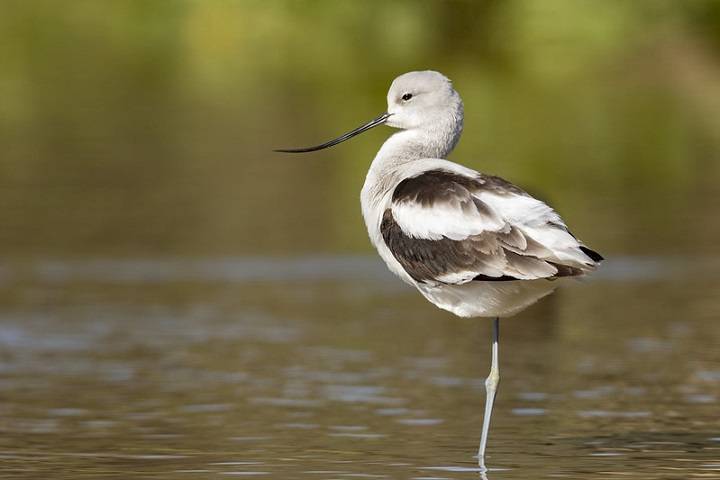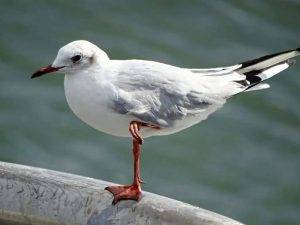Birds, with their mesmerizing plumage and graceful movements, never cease to captivate us with their intriguing behaviors. Among these behaviors, one that often piques curiosity is the sight of a bird standing confidently on just one leg. What lies behind this seemingly delicate act of balance? In this comprehensive exploration, we’ll delve into the fascinating world of avian behavior, unraveling the mysteries of why birds choose to stand on one leg, the potential benefits, and the scientific insights that shed light on this captivating phenomenon.
The Elegance of Avian Posture: A Glimpse into Bird Behaviors
Birds, with their diverse species and unique adaptations, showcase an array of behaviors that serve various purposes in their lives. From intricate courtship displays to intricate vocalizations, each action is a testament to the versatility and complexity of avian life. Among these behaviors, the act of standing on one leg stands out as a particularly elegant and enigmatic practice.
Aesthetic Display:
The sight of a bird perched on a single leg exudes a certain aesthetic charm. This posture often highlights the bird’s ability to maintain balance and poise, showcasing a mastery of control over its body. Some species, such as flamingos, are renowned for their distinctive one-legged stance, which adds to their visual allure.
Thermoregulation:
One of the primary reasons birds adopt the one-legged stance is related to thermoregulation. Birds, like all warm-blooded animals, regulate their body temperature to maintain optimal physiological function. By tucking one leg into their feathers, birds can minimize heat loss through their unfeathered limbs, particularly in cold environments.
Energy Conservation:
Standing on one leg can also be a strategy for energy conservation. Birds have a limited amount of energy stored in their bodies, and adopting a one-legged posture allows them to reduce muscle fatigue in the leg that is lifted. This becomes especially relevant during periods of rest, allowing the bird to conserve energy for activities like foraging or flying.
The Biological Mechanics: How Birds Achieve the One-Legged Balancing Act
Understanding the mechanics of how birds achieve the one-legged stance provides insights into the remarkable adaptations and physiological processes that enable them to maintain balance with apparent ease:
Tendons and Joints:
Birds have a unique skeletal structure, characterized by lightweight bones and specialized joints that facilitate a wide range of movements. Tendons, which connect muscles to bones, play a crucial role in supporting the one-legged posture. The locking mechanism in a bird’s knee joint allows it to stand on one leg without actively using muscles.
Counterbalance and Wing Use:
In some cases, birds use their wings to help maintain balance when standing on one leg. By adjusting the position of their wings, birds can create a counterbalance effect, stabilizing their bodies and preventing falls. This adaptation is particularly evident in larger birds, such as storks and herons.
Specially Adapted Feet:
The structure of a bird’s foot also contributes to its ability to stand on one leg. Many birds have a unique foot anatomy with tendons and ligaments that enable them to grasp objects, including their own bodies. This design provides stability and helps in maintaining balance during the one-legged stance.
Exploring Species-specific Behaviors: Birds that Stand on One Leg
Flamingos (Phoenicopteridae):
- Flamingos are iconic for their distinctive one-legged stance, often observed while they wade in shallow waters. This behavior serves multiple purposes, including conserving energy and minimizing heat loss. The unique anatomy of a flamingo’s leg and joints allows for this seemingly precarious pose.
Storks and Herons:
- Many wading birds, such as storks and herons, are known for their elegant one-legged postures. These birds often stand motionless in shallow water, patiently waiting for prey. The use of their wings for balance adds to the overall grace of their stance.
Sandhill Cranes (Antigone canadensis):
- Sandhill cranes are known for their elaborate courtship displays, which may involve standing on one leg as they dance and vocalize. This behavior is not only a visual spectacle but also serves as a display of strength and vitality during mating rituals.
Gulls and Shorebirds:
- Some gull species and shorebirds exhibit the one-legged stance as part of their resting behavior. These birds may alternate between standing on one leg and tucking the other into their feathers, contributing to energy conservation during periods of repose.
Scientific Insights: Research on Avian Postures and Behaviors
Scientific studies have delved into the intricacies of avian postures and behaviors, shedding light on the functional aspects and evolutionary significance of actions like standing on one leg:
Thermoregulation Hypothesis:
- Researchers have explored the thermoregulation hypothesis, suggesting that the one-legged posture helps birds conserve heat by minimizing the surface area exposed to the environment. This adaptation becomes crucial, especially in cold climates where heat loss can be significant.
Energy Conservation Studies:
- Studies on the energy expenditure of birds adopting the one-legged stance have provided valuable insights into the potential benefits of this behavior. Research indicates that standing on one leg can reduce energy consumption, allowing birds to allocate resources efficiently.
Behavioral Observations:
- Behavioral observations in the field have contributed to our understanding of the contexts in which birds adopt the one-legged posture. Researchers have noted correlations between environmental factors, such as temperature and wind speed, and the frequency of birds standing on one leg.
FAQs: Unraveling Common Questions About Birds and Their Postures
Do all birds stand on one leg?
Not all birds adopt the one-legged stance, and the frequency of this behavior can vary among species. While some birds, particularly wading and shorebirds, are commonly observed standing on one leg, others may exhibit different resting postures.
Is standing on one leg a sign of illness in birds?
In some cases, a bird standing on one leg may indicate an injury or illness, especially if the behavior is persistent and appears abnormal. However, in many instances, it is a natural and healthy posture, particularly during periods of rest.
How long can a bird stand on one leg?
The duration of a bird’s one-legged stance can vary depending on factors such as environmental conditions, the bird’s health, and its specific behavioral needs. Birds may stand on one leg for short periods during rest or for more extended periods during specific activities.
Related Post:
Unlocking the Mystery of When Ducks Lay Eggs
Unveiling the Fascinating Differences Between Male and Female Muscovy Ducks
At What Age Do Ducks Start Laying Eggs? (The Truth)
The sight of a bird standing gracefully on one leg is not just a visual delight but a testament to the intricate adaptations and behaviors that have evolved in the avian world. From thermoregulation to energy conservation, the one-legged stance serves multiple purposes, each rooted in the unique challenges and opportunities of a bird’s environment.
As we observe these elegant postures in the natural world, let us appreciate the ballet of avian balance, where each movement tells a story of survival, adaptation, and the timeless allure of the feathered realm. Whether in the tranquil waters where flamingos wade or the open landscapes where storks stand sentinel, the one-legged stance is a silent expression of the poetry written by birds in the language of nature. So, the next time you encounter a bird standing on one leg, take a moment to marvel at the delicate dance of balance and grace unfolding in the vibrant theater of avian life.




